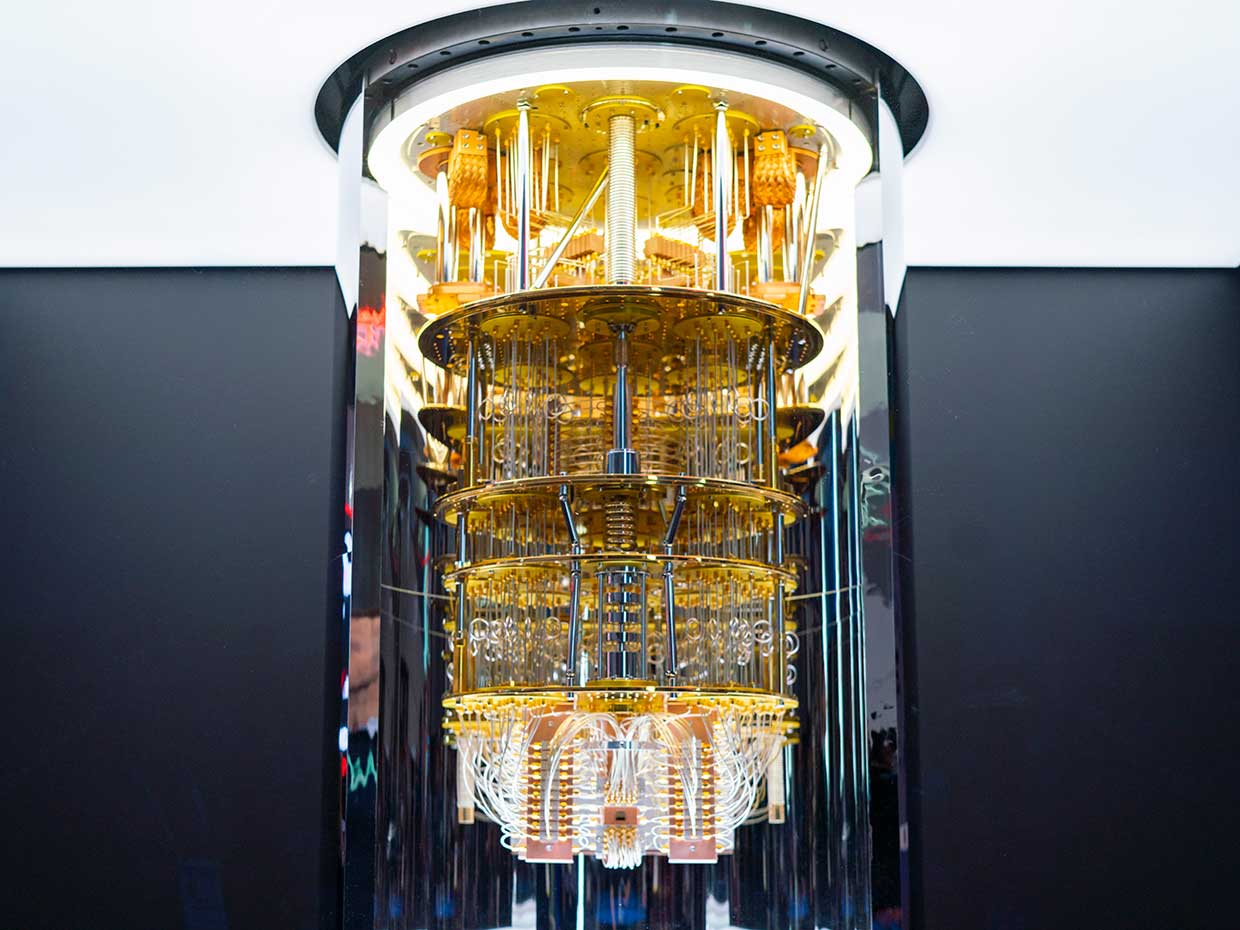IBM's "quantum volume" concept proposes to take the measurement of quantum computing progress beyond counting qubits

IBM coined the term "quantum volume" to measure progress in quantum computing while quantum technology is still far from ideal
Measuring the progress of quantum computers in an era of "noisy" quantum computing can be challenging. Some companies, notably IBM and Honeywell, have settled on such progress as "quantum volume." However, not all companies and researchers agree on the usefulness of this measure in the world of quantum computing.
In an ideal world, researchers could measure the progress of quantum computing based on the number of quantum bits (qubits) in each of the computers. However, noise from thermal motion or electromagnetic sources constantly threatens to destructively interfere with the computations performed by fragile qubits. As a result, it is very difficult to reliably assess the capabilities of quantum computers based on the total number of qubits alone. Therefore, researchers from IBM proposed to introduce the concept of quantum volume as a more reliable measure applicable at this stage of development of the not yet ideal technology of quantum computing.
“You can think of quantum volume as the average number of circuits in a quantum computer operating under the worst conditions,” says Jay Gambetta , research scientist and vice president of quantum computing at IBM. “The result means that if this 'worst case' condition is possible, then the quantum volume will be a measure of the quality of the circuits. The higher the quality, the more complex circuits can work on quantum computers. "
More specifically, the IBM team defines the quantum volume as two to the power corresponding to the size of the largest chain with the same width and depth, capable of passing certain reliability tests. Trials validate random two-qubit gateways, says Daniel Lidar, director of the Center for Quantum Information Science and Technology at the University of Southern California at Los Angeles. The size of the chain is determined either by width, based on the number of qubits, or by depth, based on the number of locks. In this case, the width and depth are quantitatively the same.
This means that a quantum computing system of 6 qubits will have a quantum volume equal to 2 to the 6th power, or 64 - but only if its qubits depend relatively little on noise, without giving out associated errors. Therefore, to determine the quantum volume, the choice of a specific reliability test is important.
Lidar, who was not involved in the concept of quantum volume, considers it a useful measure for today's quantum computers. Their technology is called Noisy Intermediate-Scale Quantum (NISQ). “This metric perfectly describes the performance of quantum computers in the NISQ era. This era is characterized by the fact that noise is still one of the main factors limiting the depth of reliably working circuits. "
Since IBM began to actively use the term in late 2019, quantum volume is already quite common in quantum computing papers and press releases from IBM and other companies, in particular Honeywell . However, at least one tech company director has already expressed the idea that the term's usefulness will soon be exhausted.
In an interview with IonQ, discussing the latest developments in quantum computers from IonQ , Peter Chapman described how noise reduction could make a high-precision 32-qubit system with a quantum volume of about 4 million. researchers will have to change the definition in order for it to remain useful.
However, Lidar does not agree that the term "quantum volume" will quickly disappear into oblivion. He points to the fact that the quantum volume will grow so quickly only because of the part of the definition in which two is raised to the power. He added that IBM did not even use this exponentiation in its first job.on this topic published in 2017. “It's just a flaw in the definition itself,” says Lidar.
Lidar says that the easiest way would be to determine the quantum volume in accordance with the largest number of qubits or gateways, and not use exponentiation.
Not everyone considers quantum volume to be such an important or necessary yardstick for assessing the progress of quantum computing. It's unclear whether the progress of quantum computers should be reduced to a single yardstick at all, says Scott Aaronson , a computer scientist and director of the quantum information center at the University of Texas at Austin. He highlighted this and other questions on the topic in his article " Screw in the quantum volume " [ volume - volume, as well as volume / approx. transl. ].
“This is just another possible generalized consumer index of the coolness of quantum computers, among the myriad alternatives,” says Aaronson.
From a practical point of view, only the big players in the industry like IBM are concerned about quantum volume. So says Javad Shabani , associate professor of physics and chairman of the Shabani laboratory at New York University. He and other researchers usually do not have access to such large quantum systems, even considering the fact that more and more companies provide cloud access to such systems for programmers.
Still, Shabani sees quantum volume as a useful concept, more meaningfully defining progress in quantum computing than simply counting qubits. He, like Lidar, proposes to leave the quantum volume in the case, while noise is the limiting factor - be it the next five years, or ten.
“If you can create a logic qubit that is immune to noise, then this concept of quantum volume will slowly disappear naturally,” says Shabani.